Historia de una cámara de 180 años / History of a 180-year-old camera
Hablar en 2018 de una cámara que tiene 180 años, significa hablar de un aparato que ha visto pasar casi toda la historia de la fotografía ante su objetivo, porque he de recordar que, en estas fechas, aún no se han cumplido los doscientos años desde su descubrimiento (1826).
If I speak about a camera that is 180 years old, now, in 2018 will mean talking about a device that has seen almost all the history of photography pass through its lens, because I must remember that, to date, the two hundred years since its discovery has not yet been fulfilled (1826).
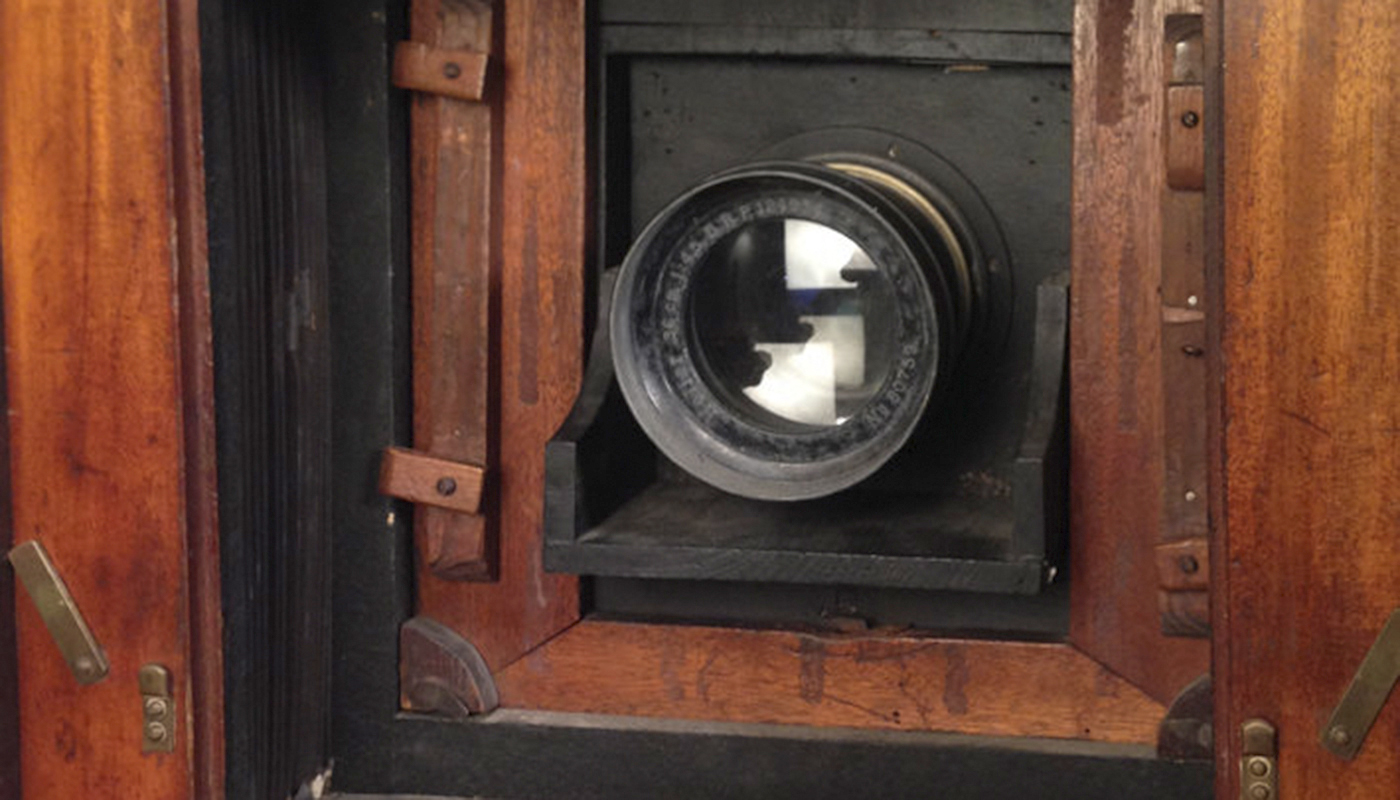
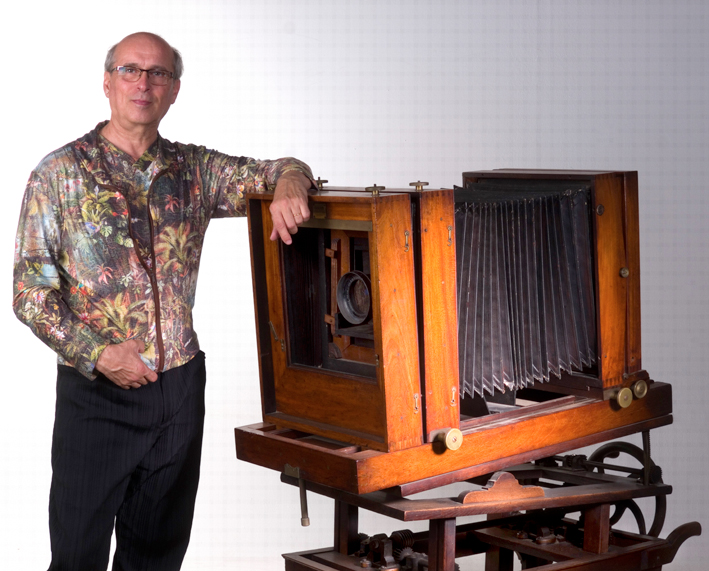
Es difícil que una historia como la que voy a contar se pueda repetir en la actualidad –yo diría que es imposible–. Hablaré brevemente de una cámara y dos familias que, sorprendentemente, han estado relacionadas de algún modo por este extraordinario aparato del que soy el último propietario, hasta el momento.
It is difficult that a story like the one I am about to tell be repeated today –I would say it is impossible–. I will speak briefly of a camera and two families that, surprisingly, have been related in some way by this extraordinary apparatus of which I am the last owner, so far.
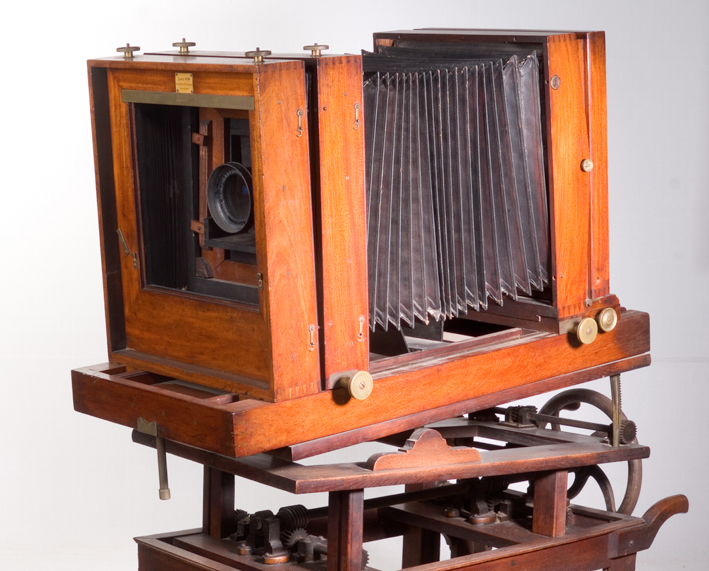 La cámara de la fotografía, de formato 30 x 40 cm., fue encargada por el fotógrafo Juan Peinado Gómez, allá por 1840, a Louis Pin, un fabricante de Vaucresson, a 18 km. de París. Juan Peinado tenía entonces 20 años y junto con su esposa Rafaela Alonso abrieron un estudio fotográfico en la ciudad de Valladolid, España, y esa era la cámara que usarían en su galería.
La cámara de la fotografía, de formato 30 x 40 cm., fue encargada por el fotógrafo Juan Peinado Gómez, allá por 1840, a Louis Pin, un fabricante de Vaucresson, a 18 km. de París. Juan Peinado tenía entonces 20 años y junto con su esposa Rafaela Alonso abrieron un estudio fotográfico en la ciudad de Valladolid, España, y esa era la cámara que usarían en su galería.
The photographic camera here shown, with a format of 30 x 40 cm., was ordered by the photographer Juan Peinado Gómez, back in 1840, from Louis Pin, a manufacturer of Vaucresson, 18 km. from Paris. Juan Peinado was then 20 years old and together with his wife Rafaela Alonso, opened a photo studio in the city of Valladolid, Spain, and that was the camera they would use from then on in their gallery.
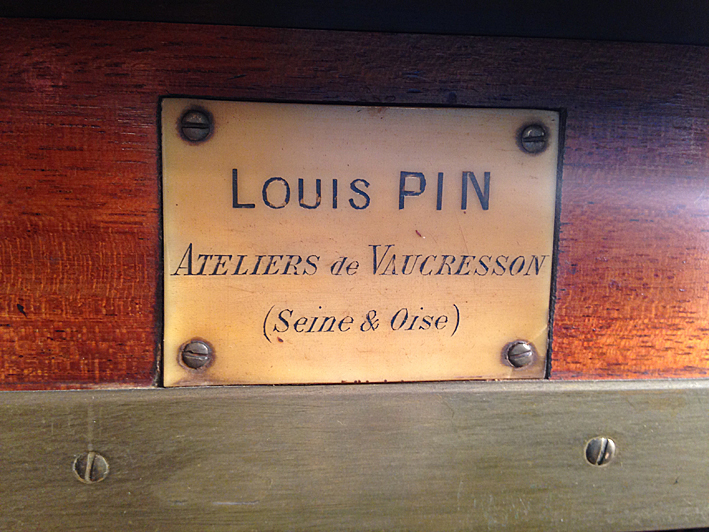 En 1882, tras una visita a la ciudad de Gijón, situada en Asturias, en el norte de la península y a orillas del mar Cantábrico, decidieron establecer su estudio en dicha ciudad, y a ella se mudaron, cambiando la ciudad del interior por una ciudad costera. Su hijo –Julio Peinado–, que cuando llegó a Gijón tenía 13 años, colaboraba en el estudio de su padre, pero a los 19 años se casó y para no entrar en competencia con su progenitor se trasladó a la vecina ciudad de Oviedo, capital de la provincia, situada a tan solo 27 kilómetros de distancia. Corría entonces el año 1888.
En 1882, tras una visita a la ciudad de Gijón, situada en Asturias, en el norte de la península y a orillas del mar Cantábrico, decidieron establecer su estudio en dicha ciudad, y a ella se mudaron, cambiando la ciudad del interior por una ciudad costera. Su hijo –Julio Peinado–, que cuando llegó a Gijón tenía 13 años, colaboraba en el estudio de su padre, pero a los 19 años se casó y para no entrar en competencia con su progenitor se trasladó a la vecina ciudad de Oviedo, capital de la provincia, situada a tan solo 27 kilómetros de distancia. Corría entonces el año 1888.
In 1882, after a visit to the city of Gijón, located in Asturias, in the north of the peninsula and on the shores of the Cantabrian Sea, they decided to establish their studio and moved there, but changing the inland town to a town on the coast. When his son Julio Peinado arrived in Gijón he was 13 years old, he helped his father in his studio, but when he reached 19 he got married and, in order not to enter into competition with his father, he moved to the neighboring city of Oviedo, the capital of the province, located only 27 kilometers away. The year was 1888.
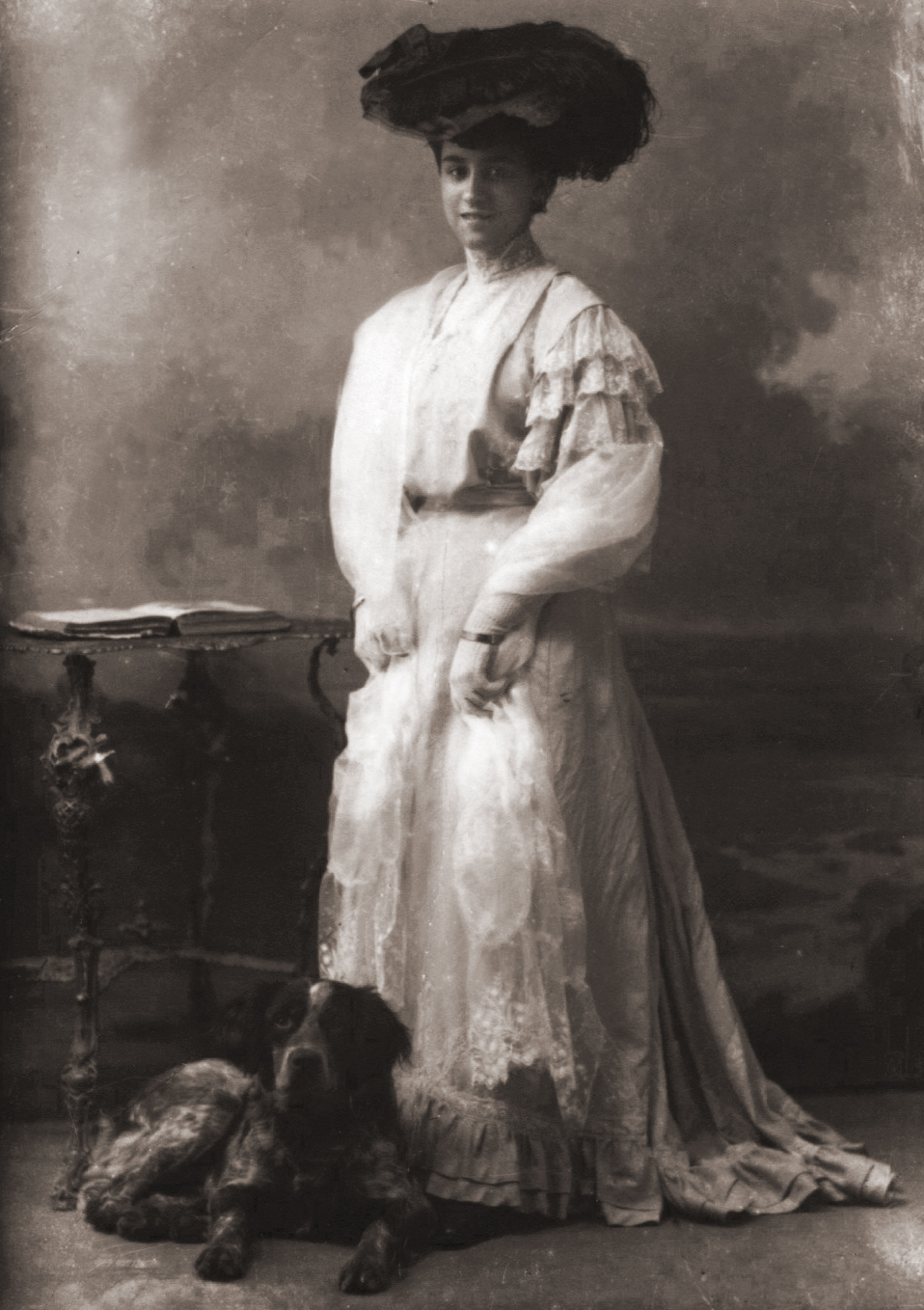 Rafaela, hija de Julio Peinado, retratada por su padre / Rafaela, daughter of Julio Peinado, portrayed by her father.
Rafaela, hija de Julio Peinado, retratada por su padre / Rafaela, daughter of Julio Peinado, portrayed by her father.
En 1893, una vez retirado su padre, volvemos a encontrarnos con Julio Peinado en la ciudad de Gijón. Se había instalado en el número 41-43 de la calle Corrida, en pleno centro, en la planta más alta de un edificio –para usar la luz solar de la galería acristalada–, y que contaba con ascensor, según anunciaba la publicidad del estudio.
In 1893, once his father retired, we can find Julio Peinado, again, in the city of Gijón. He had moved to 41-43 Corrida Street, right in the center of the city, on the top floor of a building –so that he could make the most of the sunlight of the conservatory–, and according to the advertisement of the studio, it also had an elevator.
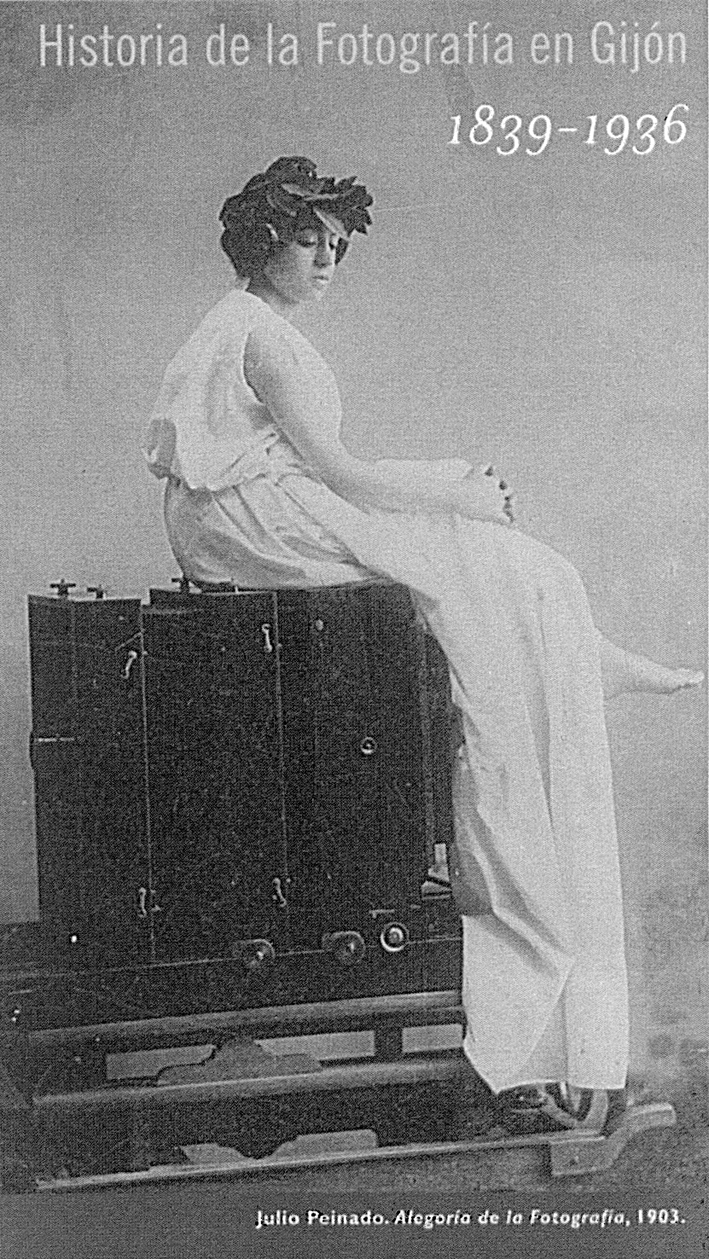 Rafaela sentada sobre la cámara en 1903 / Rafaela seated on the camera in 1903.
Rafaela sentada sobre la cámara en 1903 / Rafaela seated on the camera in 1903.
Julio Peinado fue un reconocido fotógrafo en su época, e incluso el Museo de Bellas Artes de Asturias tiene en su colección obras del mismo. En múltiples ocasiones utilizó como modelo a su hija Rafaela, con cuyas fotos obtuvo varios renombrados premios nacionales entre 1905 y 1915. Mantuvo su estudio en el mismo edificio hasta 1936, año en que estalló la guerra civil en España. Y aquí parece terminarse la historia de esta familia en relación con la fotografía, porque ni su hija Rafaela Peinado, ni su nieto Julio se inclinaron por esta profesión como modo de vida.
Julio Peinado was a renowned photographer in his time, and even the Museum of Fine Arts of Asturias has some works of his in its collection. On many occasions he used his daughter Rafaela as a model, obtaining several renowned national prizes of these photos between 1905 and 1915. He kept his studio in the same building until 1936, the year in which the civil war broke out in Spain. And where photography is concerned, this is where the story of this family seems to end, because neither his daughter Rafaela Peinado, nor his grandson Julio was inclined to carry on with this profession as a means of living.
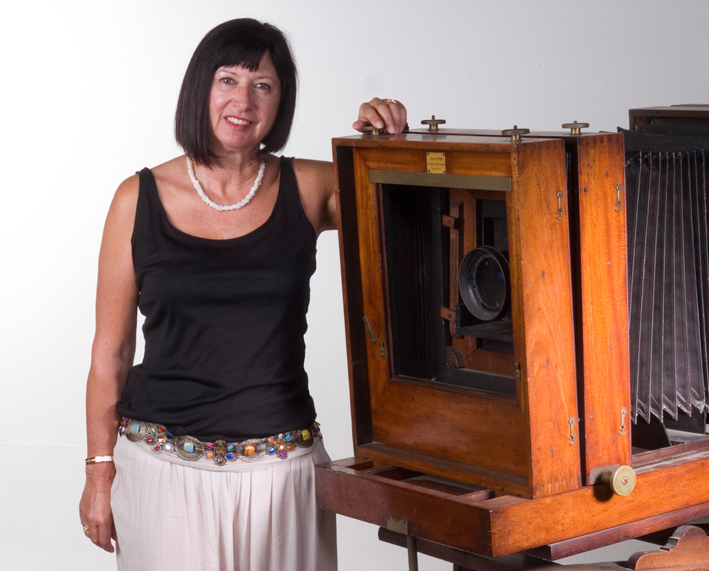 Mi amiga Lili, tataranieta de Julio Peinado / My friend Lili, Julio Peinado´s great-great-granddaughter.
Mi amiga Lili, tataranieta de Julio Peinado / My friend Lili, Julio Peinado´s great-great-granddaughter.
En 1936 traspasó el estudio a Ángel González Pérez, mi abuelo, quien ya trabajaba como fotógrafo desde 1927, y que como consecuencia adquirió la cámara de la que hablamos. Dos de sus hijos, Dimas y Pedro, siguieron con la profesión, e incluso dos de sus nietos continuaron la tradición. Mi primo Ángel, también es fotógrafo.
In 1936 he transferred the studio to Ángel González Pérez, my grandfather, who had already been working as a photographer since 1927, and as a consequence, my grandfather bought the camera in question. Two of his sons, Dimas and Pedro, continued on with the profession, and even two of his grandchildren continued the tradition. My cousin Angel is also a photographer.
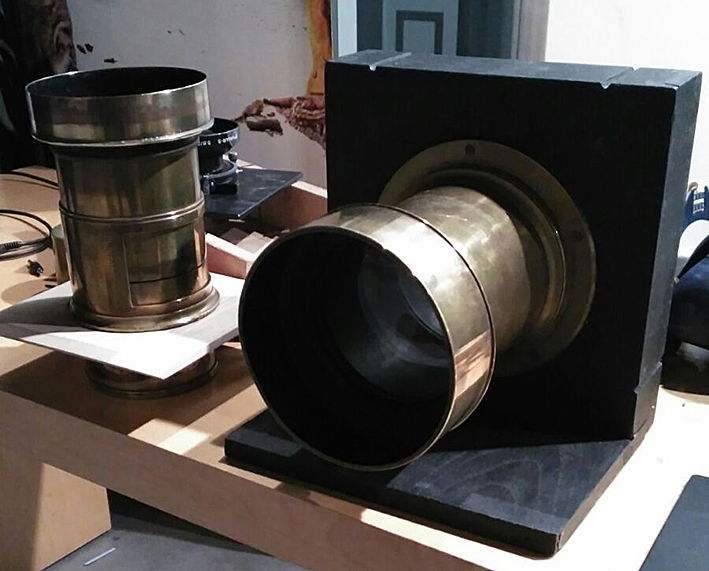 Vi trabajar la cámara por última vez en 1975, tras lo que se arrinconó con cariño y respeto por todo lo que había visto y capturado. Viajó conmigo por distintas ciudades en mis varios traslados y parecía que no volvería a ser utilizada nunca más. Desde 2011 la cámara estaba guardada en el estudio de mi amigo y fotógrafo Miguel Cruzado, en la ciudad de Castellón, quien para mi sorpresa me pidió permiso en 2018 para volverla a la vida haciendo capturas al colodión húmedo. Las ópticas originales siguen trabajando, dando resultados sorprendentes y el formato 30 x 40 cm. es un tamaño perfecto para esta técnica.
Vi trabajar la cámara por última vez en 1975, tras lo que se arrinconó con cariño y respeto por todo lo que había visto y capturado. Viajó conmigo por distintas ciudades en mis varios traslados y parecía que no volvería a ser utilizada nunca más. Desde 2011 la cámara estaba guardada en el estudio de mi amigo y fotógrafo Miguel Cruzado, en la ciudad de Castellón, quien para mi sorpresa me pidió permiso en 2018 para volverla a la vida haciendo capturas al colodión húmedo. Las ópticas originales siguen trabajando, dando resultados sorprendentes y el formato 30 x 40 cm. es un tamaño perfecto para esta técnica.
The last time I saw the camera in function for the last time was in 1975, after which it was stored away with love and respect for everything it had seen and captured. It travelled with me through different cities every time I moved and I thought that it would never be used again. The camera has been stored in my photographer friend Miguel Cruzado’s studio since the year 2011 situated in the city of Castellon. To my surprise, in 2018 he asked me for permission to bring it back to life again, by taking photographs using the collodion wet plate process. The original lenses are still working, giving out some extraordinary results, and the 30 x 40 format is the perfect size for this technique.
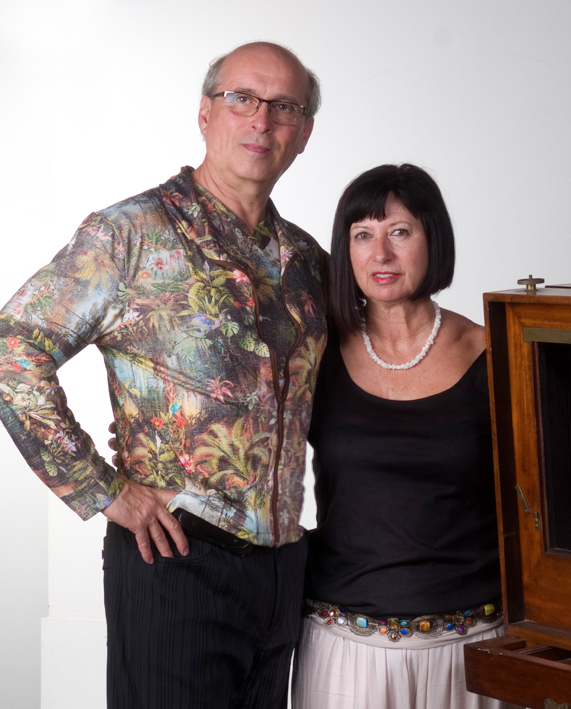 Una cámara y seis generaciones de fotógrafos / One camera and six generations of photographers.
Una cámara y seis generaciones de fotógrafos / One camera and six generations of photographers.
No solo me alegré yo de este nuevo revivir, sino que estoy seguro de que Juan, Julio, Ángel, Dimas, Pedro –allá donde estén– y mi primo Ángel también están felices.
I was not only happy of its coming back to life again, but I am sure that Juan, Julio, Angel, Dimas, Pedro –wherever they are–, and also my cousin Angel are also happy about it.
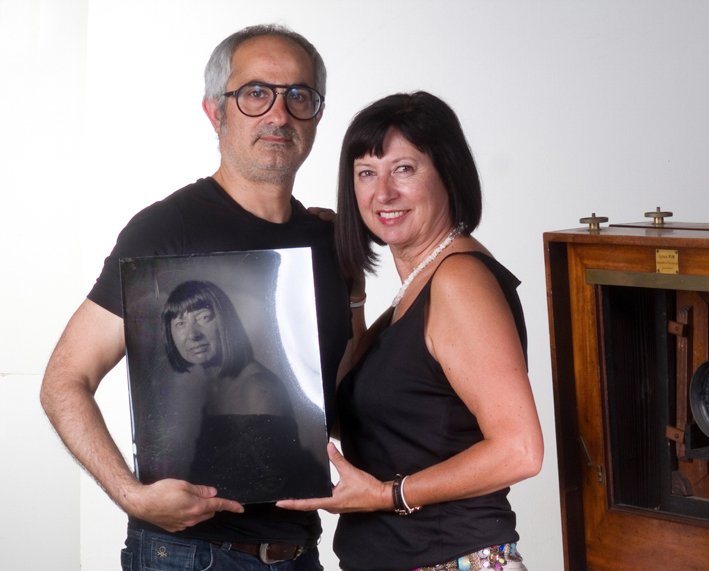 Miguel Cruzado con Lili y su foto al colodión humedo / Miguel Cruzado with Lili and her wet colodium plate.
Miguel Cruzado con Lili y su foto al colodión humedo / Miguel Cruzado with Lili and her wet colodium plate.
Y ahora debo decir que la tradición fotográfica termina con nosotros en esta familia, ya que no tenemos sucesores dentro del gremio.
Sin embargo la familia de Juan Peinado no desaparece de la historia. Parece que Celia, la biznieta de Rafaela, tataranieta de Julio, el hijo de Juan Peinado, sigue con la fotografía y tiene un estudio abierto. La pelota ha vuelto a caer en su tejado.
I’m sorry to say that now this tradition of photography ends with us in this family because we don’t have any successors within the profession.
Nevertheless, Juan Peinado’s family are not disappearing from this history. It seems that Celia, Rafaela’s great-granddaughter and Julio’s great-great-granddaughter, has continued in the profession of photography and has opened a studio. The ball has now fallen in her court.
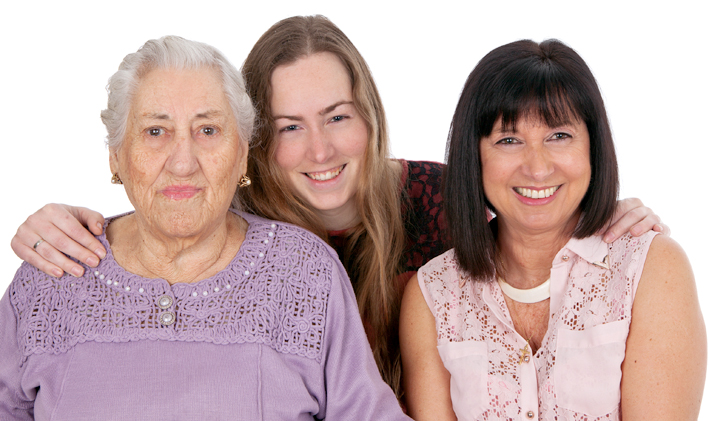 Tres generaciones de la familia Peinado. Marina, Celia y Lili / three generations of the Peinado family. Marina, Celia and Lili.
Tres generaciones de la familia Peinado. Marina, Celia y Lili / three generations of the Peinado family. Marina, Celia and Lili.
Curiosamente las nietas de Rafaela –Begoña y Lili–, y yo, nacimos prácticamente a la vez, en domicilios muy cercanos, fuimos amigos desde que nacimos y casi, casi, diría que fuimos amamantados por nuestras madres mientras conversaban.
Curiously, Rafaela’s granddaughters –Begoña and Lili–, and I were born practically at the same time, in houses very near to each other, we had been friends since we were born, and I would almost, almost say that we had been breastfed by our mothers while they held conversations with each other.
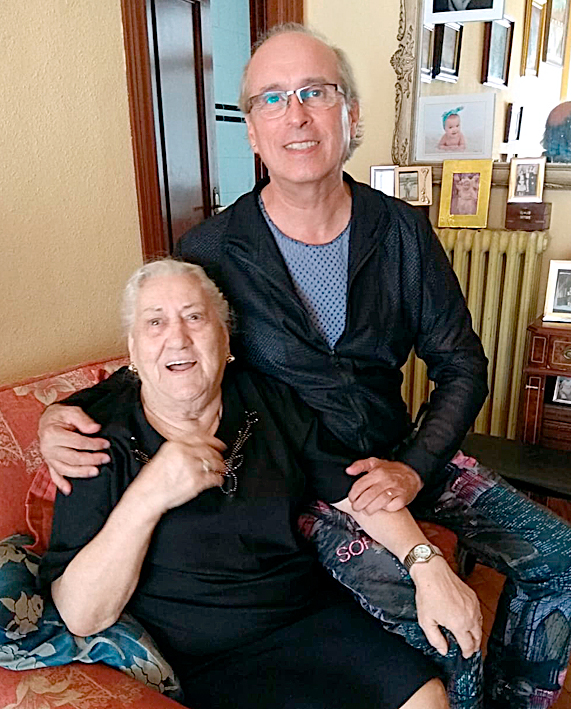 Con mi querida Marina. 97 años llenos de energía / Me and my beloved Marina. 97 years full of energy.
Con mi querida Marina. 97 años llenos de energía / Me and my beloved Marina. 97 years full of energy.
Así que le he pedido a Lili que guarde la cámara en su casa de Gijón por unos años, para que el viejo y venerable aparato siga siendo testigo de la historia de la fotografía en nuestras familias. Esto no ha terminado…
A ver qué pasa.
So, I asked Lili if she could keep the camera in her place in Gijon for a few years so that the old venerable machine can still be a witness to the history of the photography in our families. This has not ended…
Let’s see what happens.
Translated to English by «Speedy» Sandra Crundwell.

